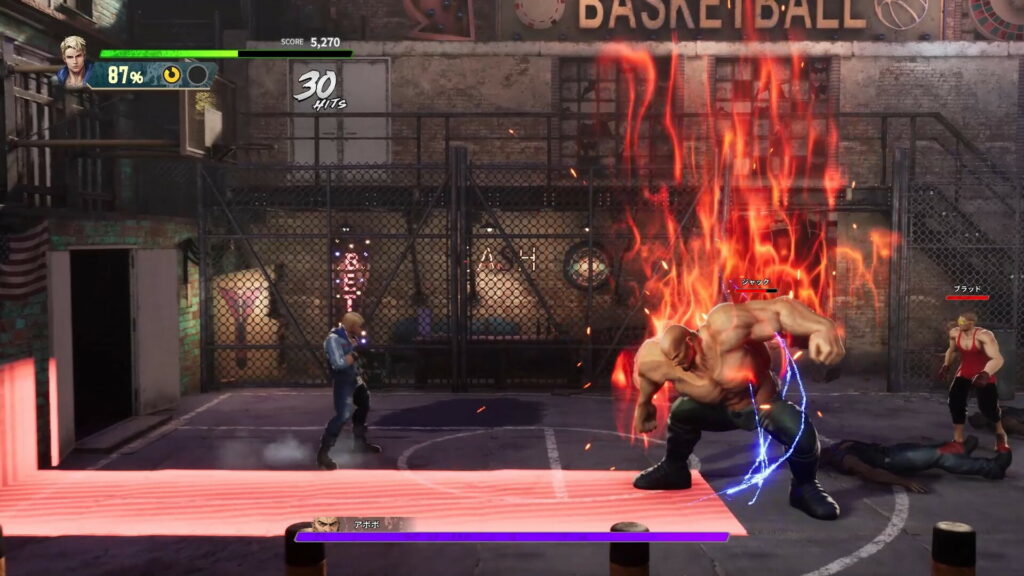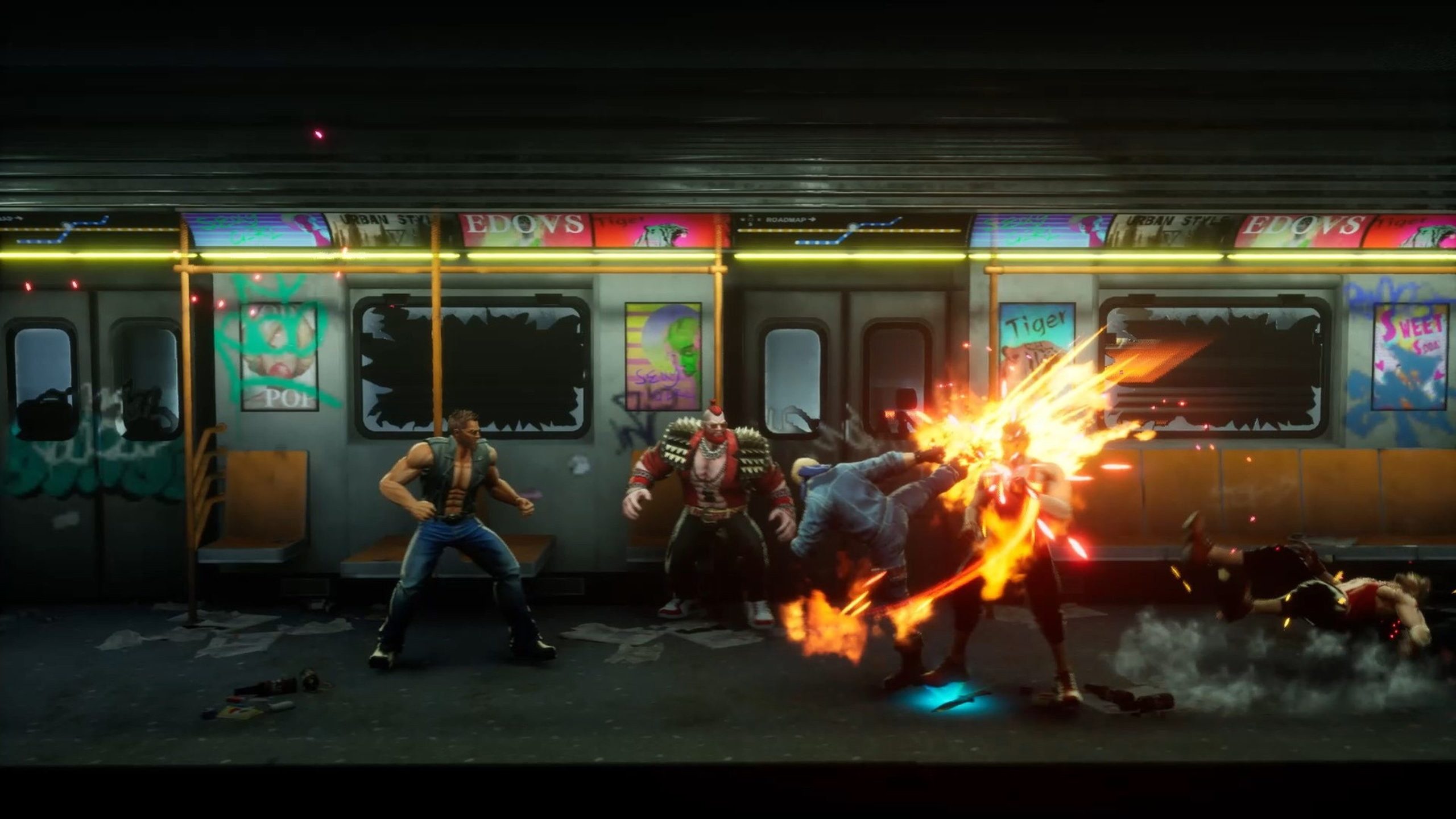Double Dragon Revive Review – Not The Dragon
Before even starting Double Dragon Revive, I had to mentally prepare myself for everything that it wouldn’t be, purely based on the trailers showcased thus far. It wasn’t going to be like Absolum in terms of presentation or fighting mechanics, much less in world design and narrative. It wasn’t going to actually “revive” interest in the franchise like Streets of Rage 4, presenting a classic with more than just a shiny new coat of paint. It probably wouldn’t even fulfill that contemporary retro niche which Fight’N Rage so brilliantly embodies.
Which is funny because Double Dragon is one of the most influential games of all time, not only establishing the beat ’em up genre’s major tenets but inspiring the likes of Golden Axe and Final Fight. And yet subsequent titles and spin-offs couldn’t live up to that legacy. In the wake of Double Dragon Gaiden and Neon doing their own thing to mixed results, does Revive at least pave the way forward while capturing everything that made the original so compelling?
Well, no, and that would be fine if it succeeded on its own merits, but developer Yuke’s drops the ball there as well. The result is a revival that’s more like a rumination on how to mess up a beat ’em up game.
[embedded content]
“The Pagoda offers this weird perspective to accommodate the annoying eight-directional movement, resulting in a weird effect when climbing the stairs. But even if it tries sticking to a more rudimentary design, like on the highway, Revive feels downright boring.”
The first step: An ugly style. I was flabbergasted when starting Double Dragon Revive for the first time because of its animated stills masquerading as cutscenes. These were more colorful and vibrant than anything seen in the gameplay thus far, and actually made the designs, both for the protagonists and villains, pop out more. But it’s not the actual visual style – when you enter that first stage, a fully 3D, dingy world with generic-looking characters greets you. It was probably easier to develop in retrospect, but the results just come across as dull.
Not that the overall pacing and gimmickry of the levels does much to fix that. You might think that going from one side to the other on a 2D plane is what constitutes a beat ’em up, but there’s so much that can be done in terms of interesting mechanics, enemies, and structures. Double Dragon Revive tries to leverage that in some regards, but with mixed results. One sequence in the Power Plant felt more like an impromptu platformer with conveyor belts and fiery vents. It’s unique but feels completely out of place, especially with the lack of enemies.
The Pagoda offers this weird perspective to accommodate the annoying eight-directional movement, resulting in a weird effect when climbing the stairs. But even if it tries sticking to a more rudimentary design, like on the highway, Revive feels downright boring. This level seemingly goes on forever with very few exciting things going on (barring the motorcycle-riding enemies that traverse the screen a few times).
From the outset, you can choose from two fighters – Billy and Jimmy. The story actually takes place 15 years after a nuclear war in a metropolitan city-esque colony where the Shadow Warriors gang rules. For some reason, people are being kidnapped, and after their childhood friend Marian goes missing, the duo embark on a hard-hitting, name-taking journey.
“I can stomach challenging bosses, but the amount of tedium in Revive’s encounters is simply not fun.”
Except that the main motivation for their quest is resolved almost immediately. The whole kidnapping thing is also a gateway into utterly bizarre twists with roots in the trio’s upbringing in the Sosetsuken fighting style. While I appreciated the art style of these cutscenes, they also dragged for way too long, and the characters, though initially making a decent impression, are undone by unfunny dialogue, making the skip button that much more appealing. Which probably explains why some of the plot developments took me completely by surprise, but make no mistake – even by Double Dragon standards, the narrative is downright asinine.
Combat offers some pretty simple mechanics on the surface, with a light attack that can combo, a heavy attack that can knock enemies away or stagger them, and a special. Characters can also block, dodge and grab enemies, either slamming them into environmental objects or tossing them into others. When a Dragon Orb is full, you can execute a Hyper Blow that hits multiple enemies in an AoE.
If there’s one bright spot, it’s that even with this simplistic combat approach, each character has a unique moveset. Billy is fairly well-rounded with a special spinning kick for knocking enemies back, and a heavy attack that’s perfect for sending enemies careening into the background. On the other hand, Marian is quicker and more agile, executing diving kicks and mid-air dodges alongside a special rising knee.
There is some combo potential, and making use of your environment to back an enemy up against a wall to execute an even more devastating version of the basic combo is cool. Unfortunately, the eight-directional movement feels clunky, while blocking and dodging feel unreliable. Enemies aren’t completely dense, but the wall-jump into an AoE attack that easily clears them all out trivializes some encounters. Breaking through enemy armor, especially when they’re about to perform certain attacks (denoted by a blue glow), also feels finicky at times. With how important the latter is for obtaining Dragon Orb charge and dealing some real damage with Hyper Blows, it can be painful. Also, the fact that you need to have the contextual buttons appear over enemies to execute Hyper Blows instead of simply letting them rip whenever feels awkward, especially in the heat of the moment.
Then there are the bosses, who attend the same school of annoying gimmicks as the stages. There’s one that constantly throws you around, but the really annoying part is getting knocked by even the slightest touch of barrels being placed in the arena. Another has flame vents on the walls that activate at certain intervals as he dashes around. You need to avoid all this to break through and ultimately build Dragon Orb charge, since his usual combos drop explosives that, you guessed it, mercilessly knock you back. I can stomach challenging bosses, but the amount of tedium in Revive’s encounters is simply not fun.

“A beat ’em up with a recognizable name and very little else going for it. If you’re starved for new games in the genre, there are far better options available.”
Coupled with the fact that a single playthrough takes a handful of hours with very little reason to return, Double Dragon Revive feels like it lacks any real impact. Replaying with other characters and alongside friends are two major appeals in the journey, but I simply have no desire, given how boring the stages can be. Some of the enemies stand out – katana-wielding swordmaster that I have to jump attack to break through, my beloved – but for the most part, they’re mostly uninteresting and downright boring to fight.
If you’re keen on getting the most bang for your buck, there are extra Episodes that provide some more story context on the various villains. These are also a decent way to challenge yourself, even if they’re ultimately not worth the time. You also have optional missions, like taking out a set number of enemies, if you want to avoid the headache of traversing the story.
Overall, Double Dragon Revive is about what I expected, even after diluting my expectations so far. A beat ’em up with a recognizable name and very little else going for it. If you’re starved for new games in the genre, there are far better options available.
This game was reviewed on PC.



Comments are closed.